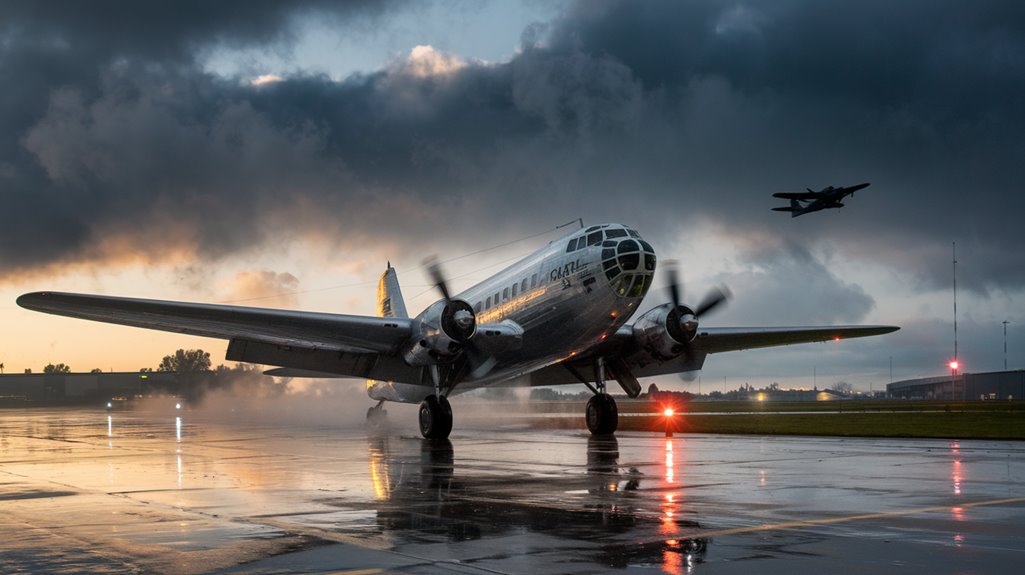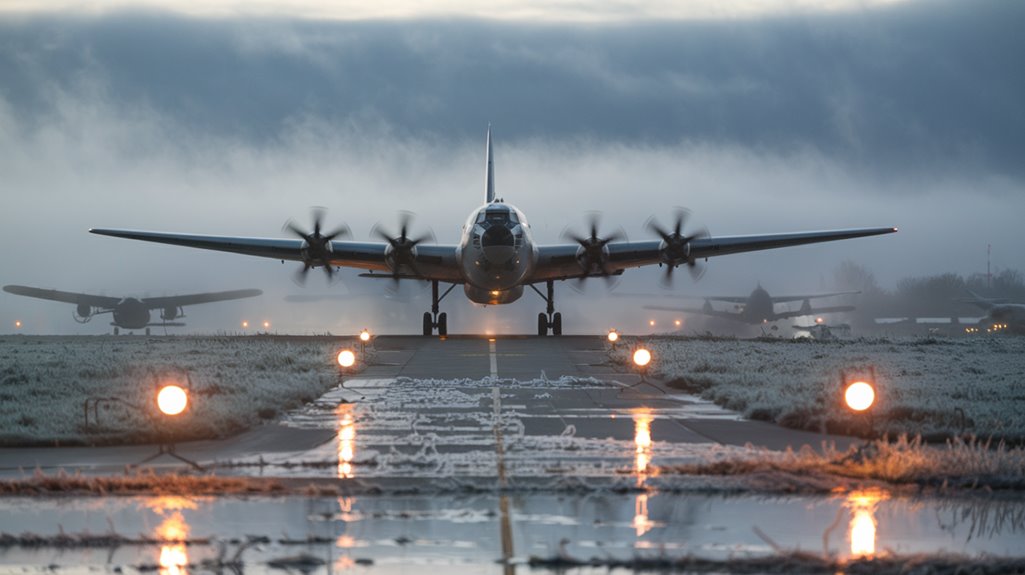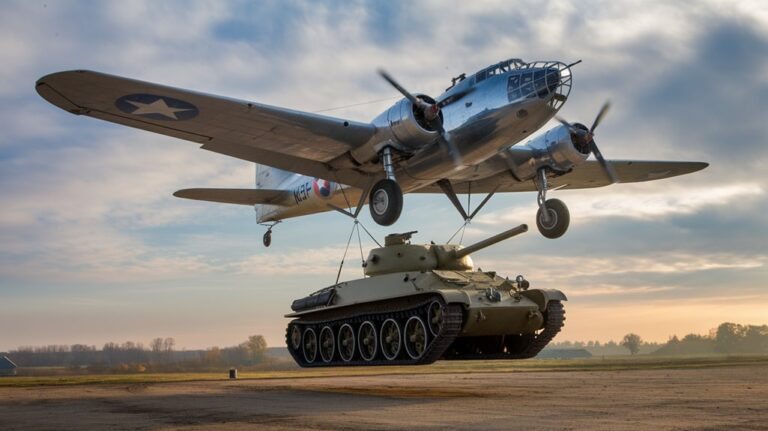During the Berlin Airlift, Planes Landed Every Half Minute
You might think landing planes every 45 seconds would be impossible, but during the Berlin Airlift, that's exactly what happened. As you watch modern airports handle their daily traffic, consider that in 1948-49, Allied pilots managed this feat without today's advanced technology. Under Major General William Tunner's precise scheduling, aircraft touched down at Tempelhof Airport with clockwork regularity, transforming what many considered impossible into a life-saving reality. There's more to this remarkable story than just quick landings.
The Remarkable Speed of the Berlin Air Bridge
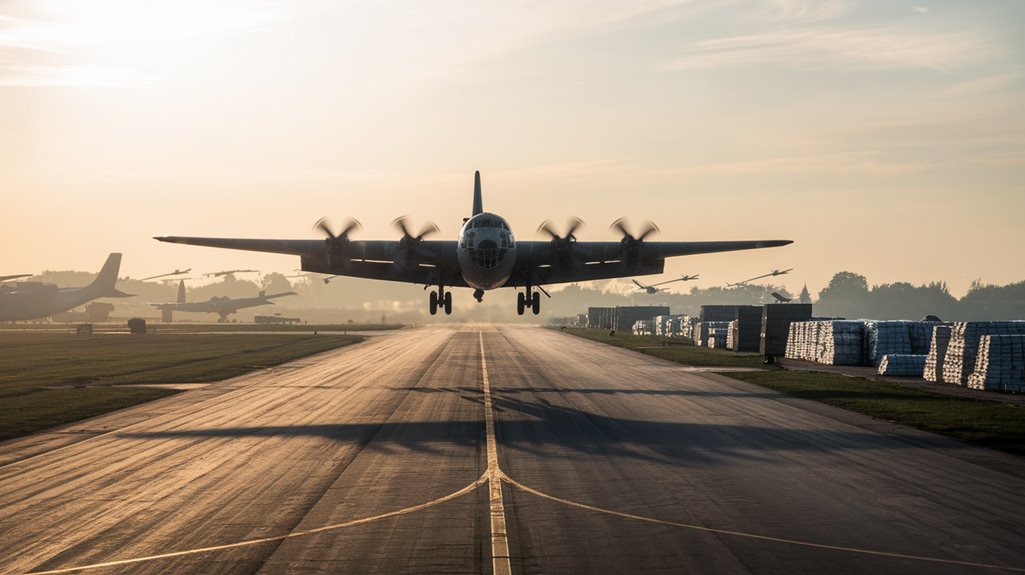
Three days was all it took for the Berlin Airlift to reach full momentum, with deliveries skyrocketing to 384 tons by the third day of operations.
You'd be amazed by the airlift logistics that made this possible: planes touched down every 45 seconds at Tempelhof Airport during peak operations, with aircraft flying through designated corridors at different altitudes to prevent collisions.
The cargo management system was equally impressive. The construction of new runways by the 852nd Engineer Aviation Battalion was crucial to handle the intense aircraft traffic.
The USAF coordinated 189,963 flights, delivering a staggering 1,783,573 tons of supplies. They achieved this by implementing a block formation system that accommodated different aircraft speeds, while maintaining precise 15-minute intervals between altitude levels. The operation demonstrated unprecedented international Allied cooperation as multiple nations joined forces to sustain West Berlin.
On their most productive day, April 16, 1948, they completed 1,398 sorties – a demonstration of the operation's remarkable efficiency.
Engineering the Perfect Landing Schedule
While the Berlin Airlift seemed chaotic in its early days, delivering a mere 90 tons daily, its transformation into a precision operation wouldn't have happened without Major General William Tunner's revolutionary scheduling reforms. The operation proved vital in supporting 2.8 million residents who had no other means of receiving supplies.
Under his leadership, scheduling efficiency soared through simple yet effective changes to air traffic control procedures.
You'll be amazed to learn how Tunner eliminated the complex "block system" that had aircraft arriving every four minutes at different altitudes. Instead, he implemented mandatory instrument flight rules and straight-in approaches, giving pilots just one chance to land before returning to base.
He also centralized all air movement control to a single point, streamlining operations. These changes, combined with his preference for C-54s over C-47s due to their faster unloading times, turned the airlift into a remarkable display of precision timing. The operation ultimately succeeded in delivering 2.3 million tons of supplies to sustain West Berlin's population.
How Weather and Technology Shaped Operations
Despite having skilled pilots and well-maintained aircraft, the Berlin Airlift faced its greatest adversary in Mother Nature herself. You wouldn't believe the challenges: the winter of 1948 brought the foggiest conditions Berlin had seen in 80 years, with November and December being particularly brutal. Through the determined efforts of Lt. Gen. William Tunner, operations became increasingly organized and efficient.
But the airlift's success lay in its weather adaptations and technological advancements. You'll find the most impressive innovation was the ground-controlled approach radar system, which let planes land safely even in zero visibility.
The technological improvements didn't stop there – they upgraded runways with concrete surfaces to handle heavier aircraft and implemented instrument flight rules for safer operations. Air traffic control became so efficient that planes were landing at three-minute intervals.
These changes, combined with mobile snack bars that kept crews fueled without leaving their aircraft, transformed a challenging operation into a marvel of efficiency.
Breaking Records With Precision Timing
The Berlin Airlift shattered records through precise scheduling and unwavering coordination.
You'll find the most impressive display of flight coordination during Easter Sunday 1949, when crews delivered 12,941 tons of coal across 1,383 flights without a single accident.
The operation's cargo efficiency reached new heights as daily tonnage soared from 1,000 tons in the early weeks to over 4,500 tons at peak performance.
The "block system" timetable guaranteed planes could land every 30 minutes, while the Combined Airlift Task Force managed all air movements through a single control point.
You'd be amazed to learn that by April 1949, the airlift was delivering up to 8,893 tons daily.
Over 200,000 flights were completed throughout the entire operation, demonstrating the massive scale of this humanitarian effort.
This remarkable achievement helped convince the Soviets to lift their blockade the following month.
Under the command of Major General William Tunner, the operation maintained exceptionally high safety standards with an accident rate less than half that of the entire Air Force.
The Legacy of 45-Second Landings
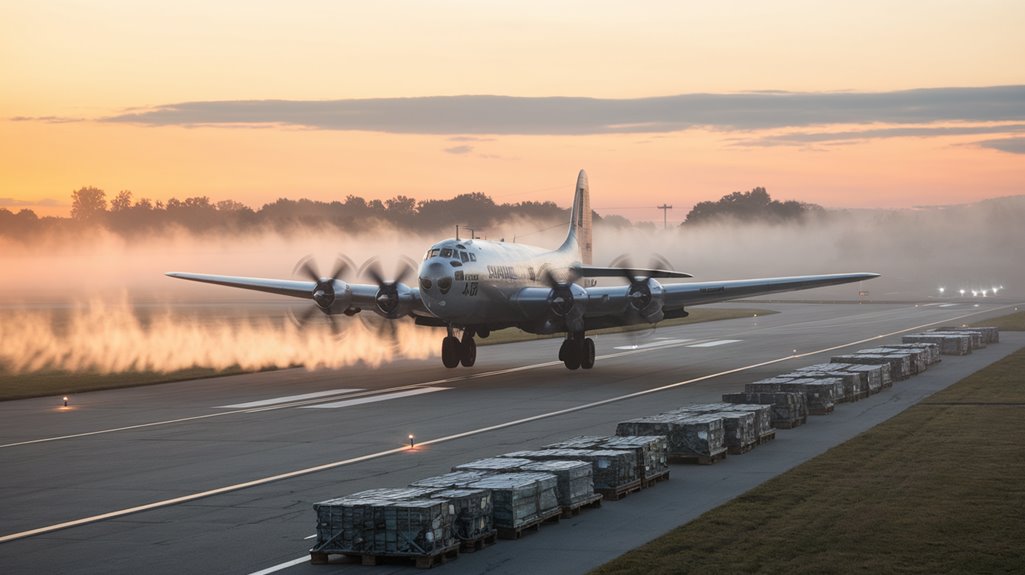
Landing a plane every 45 seconds became an extraordinary feat of precision at Berlin's Tempelhof Airport during the height of the airlift.
The unprecedented landing efficiency transformed airlift logistics, creating a model that would influence military operations for decades to come.
Pilots like Chuck Childs flew 196 missions during the humanitarian effort, demonstrating remarkable dedication to the operation.
You'll be amazed by these groundbreaking achievements:
- Aircraft landing times improved from every three minutes to just 45 seconds
- Crews could unload 10 tons of cargo in just over 5 minutes
- The operation sustained over 1,500 daily flights
- Teams delivered more than 4,500 tons of cargo each day
General Tunner's "conveyor belt" system revolutionized the process by eliminating aircraft stacking and implementing a strict one-landing-attempt rule.
These innovations, combined with the switch to C-54s and their level cargo floors, created a remarkably efficient operation that ultimately broke the Soviet blockade.

